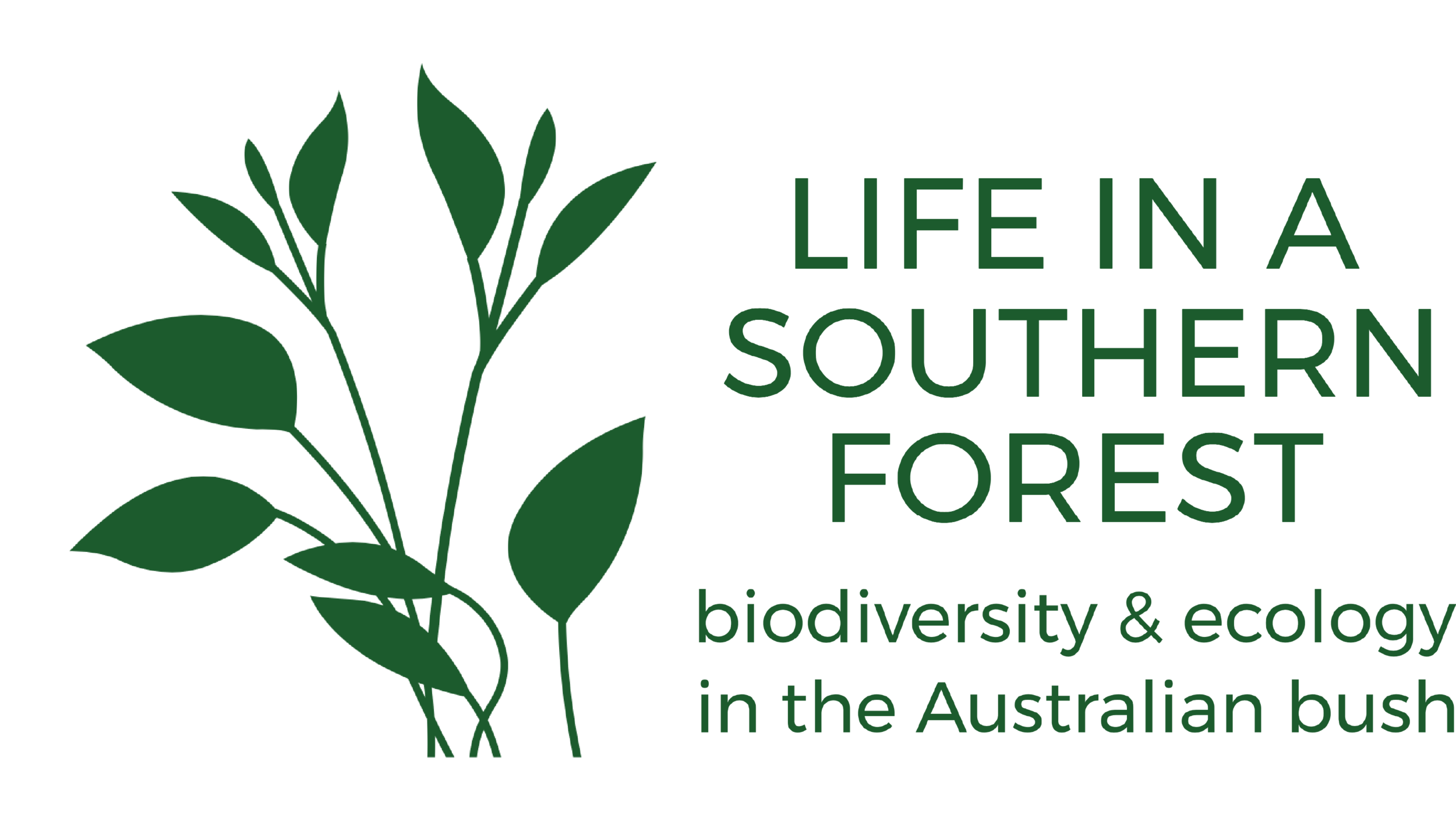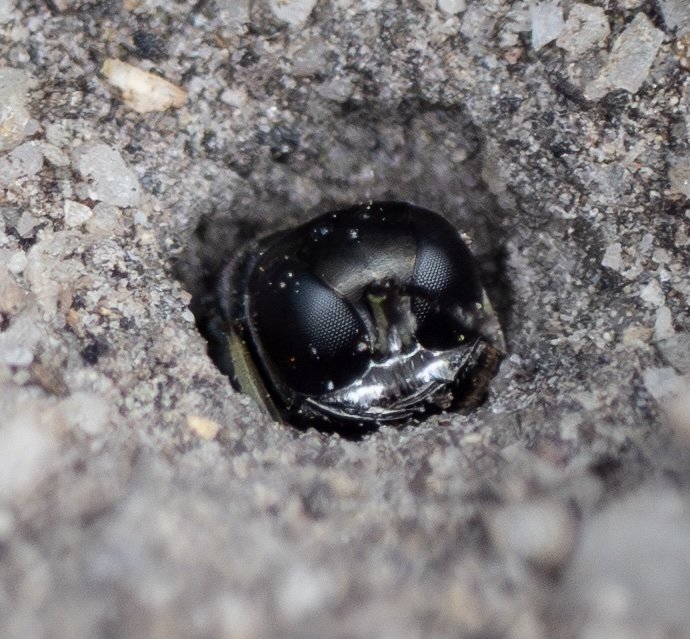
Rhopalum coriolum
Making their first appearance in late winter, these little wasps are one of the first crabronids of the season. They favour a firm-packed, clear and sunny patch of fine gravel for their burrows. By mid spring the adults are nowhere to be seen.
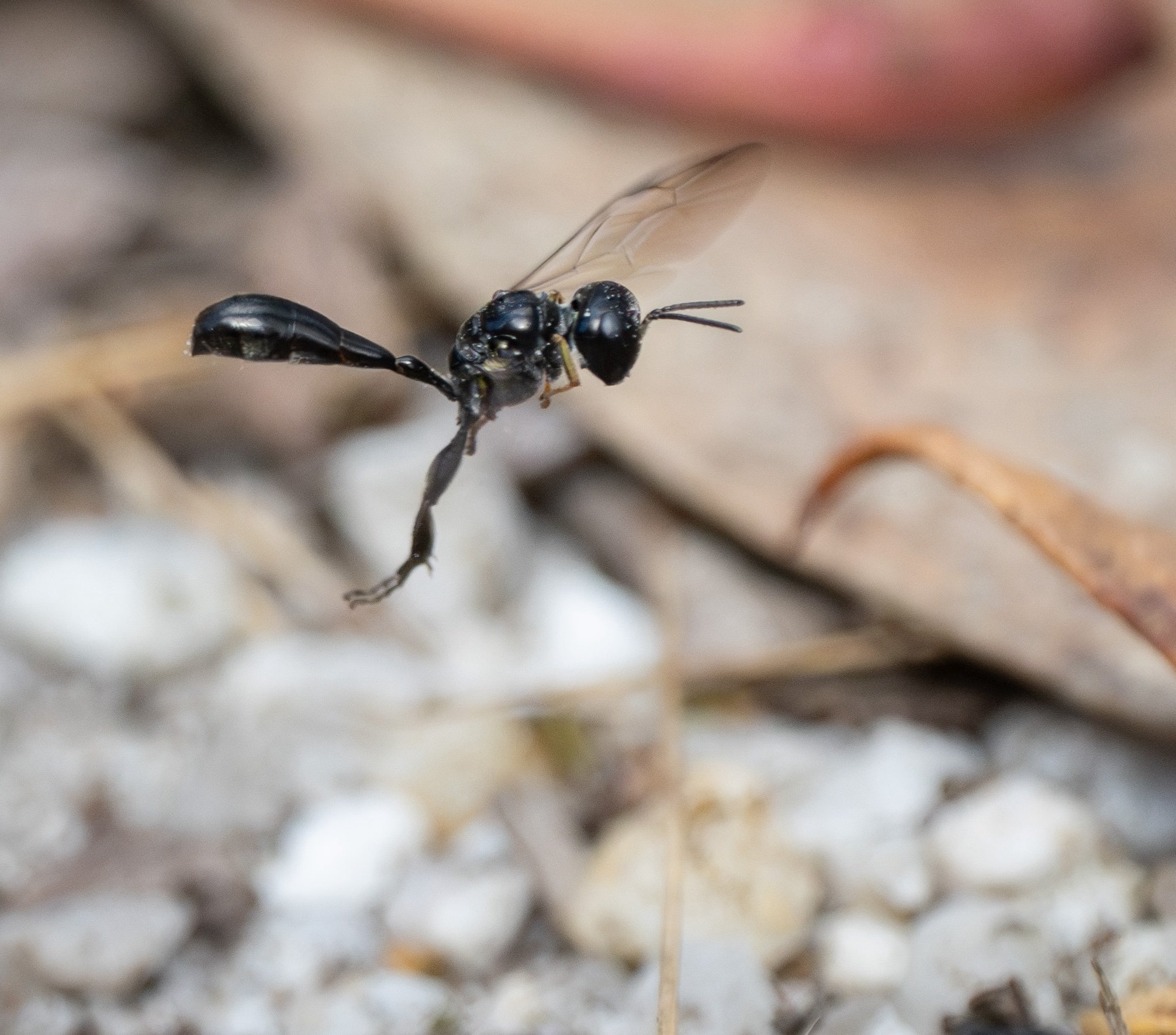
Rhopalum coriolum
Although less than 7mm from head to ‘tail’, their jizz catches my eye. Bobbing flight just above the ground, legs dangling, long abdomen trailing. And every year nesting in the same place.
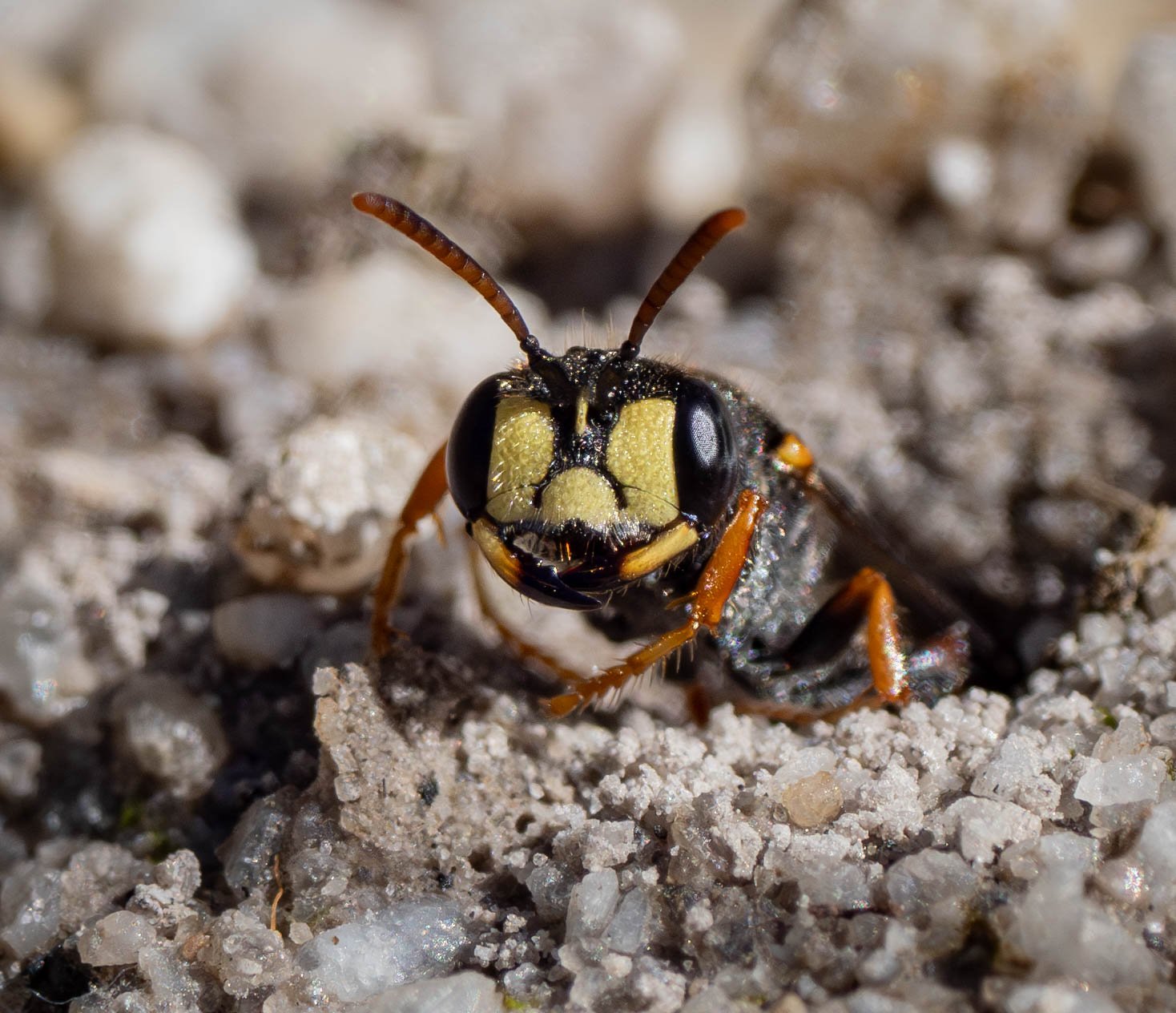
Cerceris antipodes
From October to April these bright yellow faces are my constant companions. The females overwinter as adults and set to renovating and stocking their nest burrows whenever weather allows.

Cerceris antipodes
At 8mm, male Cerceris are slightly smaller than the females but from mid summer they are more commonly seen, patrolling the nest mounds looking for an opportunity to mate.

Cerceris antipodes
Until last month, I didn’t know where the males spent the night. Now I do … tucked away in the cracks or borer holes of old wood. In good weather, this little male gets out and about. But by day’s end he is always tucked in, with just his face visible to me as I pass by. He’s not alone. There’s a second male next door, in an adjacent crevice.
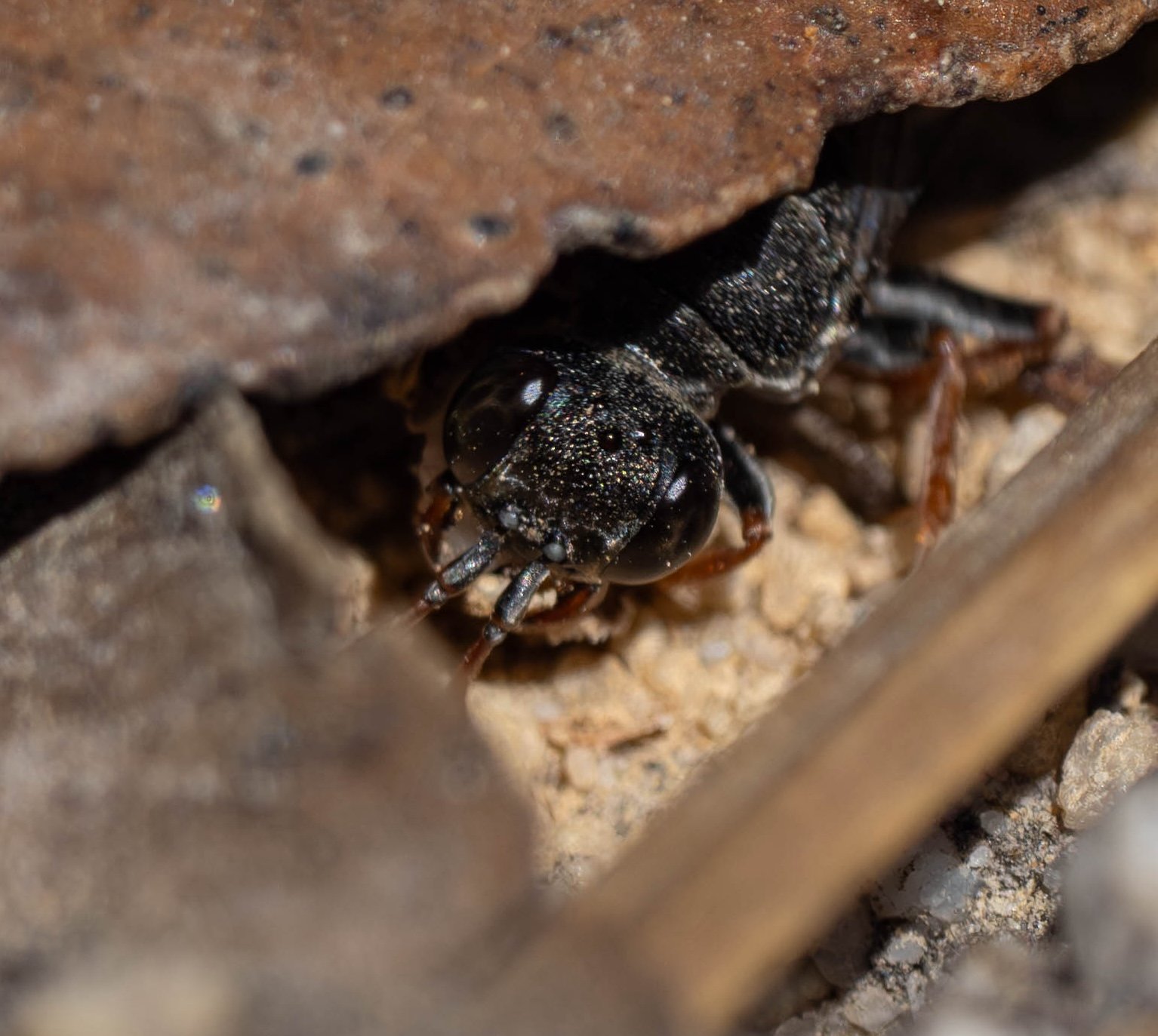
Sphodrotes punctuosa
Another dependable among the summer crowd, although females tend to be reclusive. They dig their nest burrows under leaves and rarely show their faces in the open. The males, however, are quite a different story!
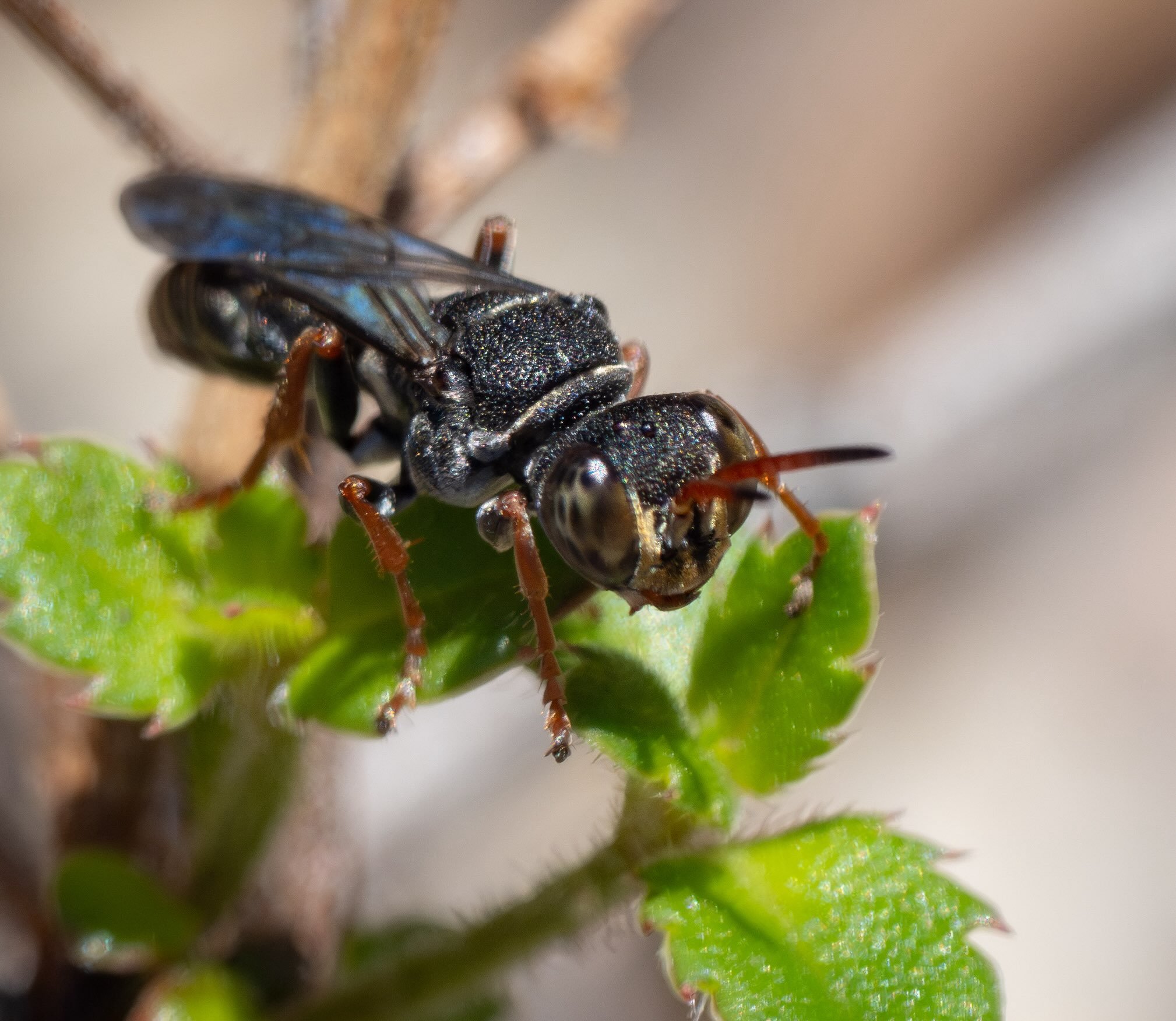
Sphodrotes punctuosa
When not patrolling the sandy, leaf-littered tracks favoured by the nesting females, males strike a pose on low vegetation. They turn on the spot, no doubt on the lookout for rivals and threats …
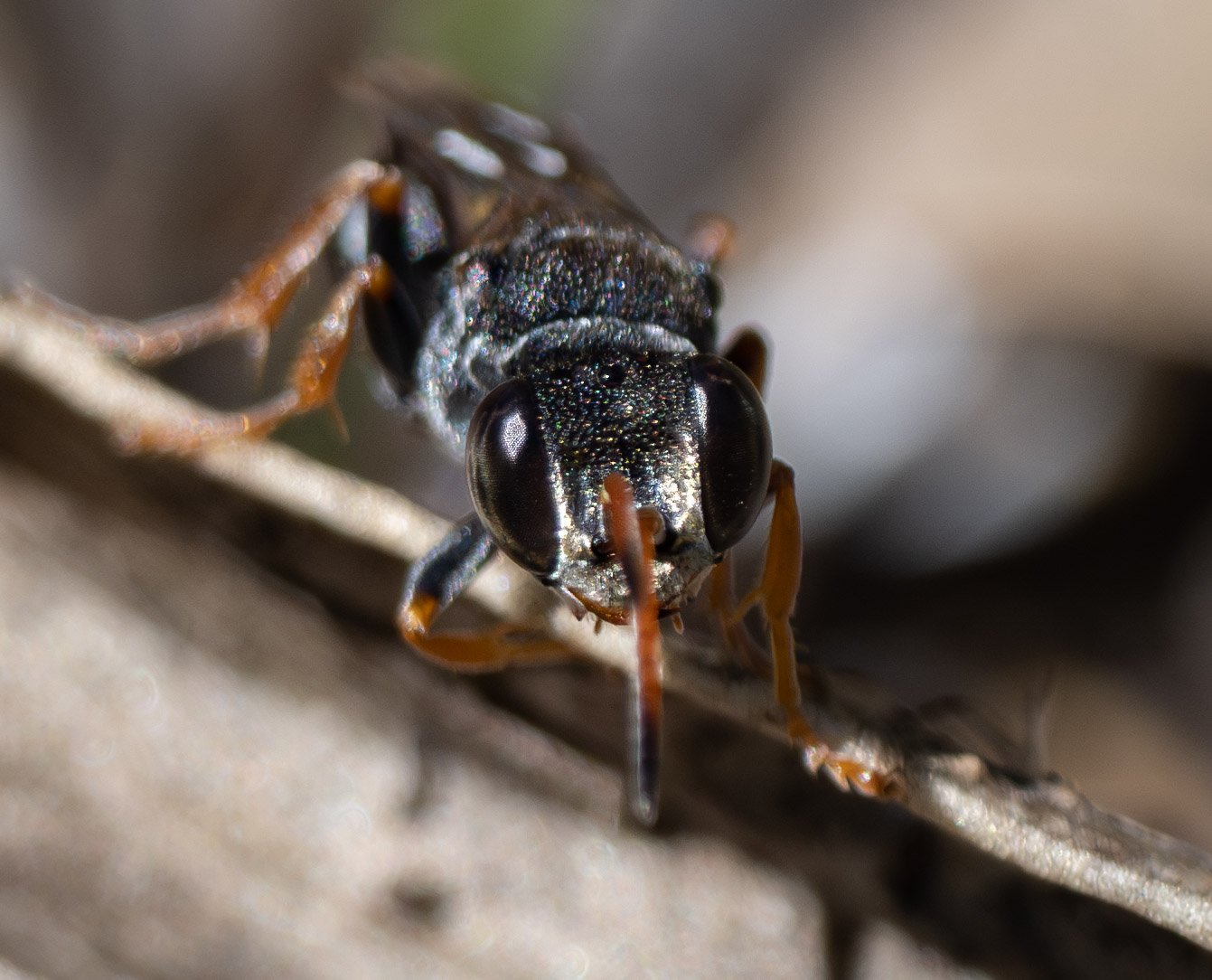
Sphodrotes punctuosa
… and typically favour me with a long, hard stare. Rather plucky for an insect no more than 10mm long!
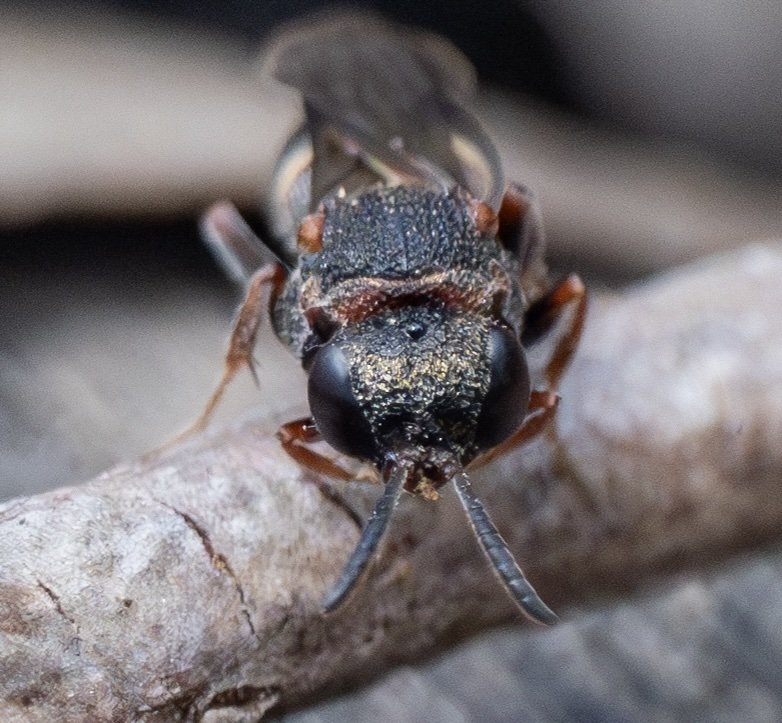
Acanthostethus
On a shady forest path here at home
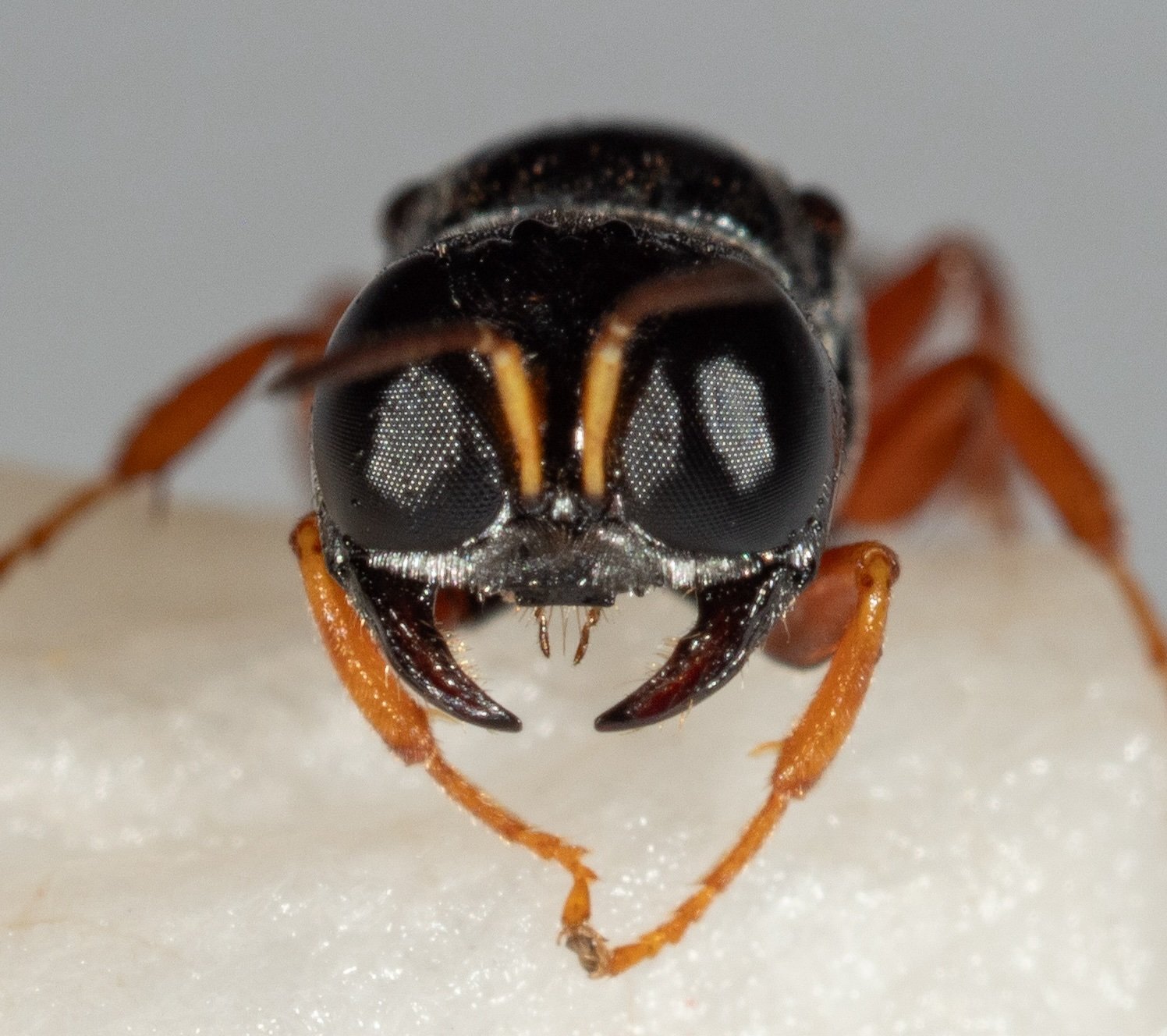
Pseudoturneria
In a roadside ditch, about 2km from the forest.
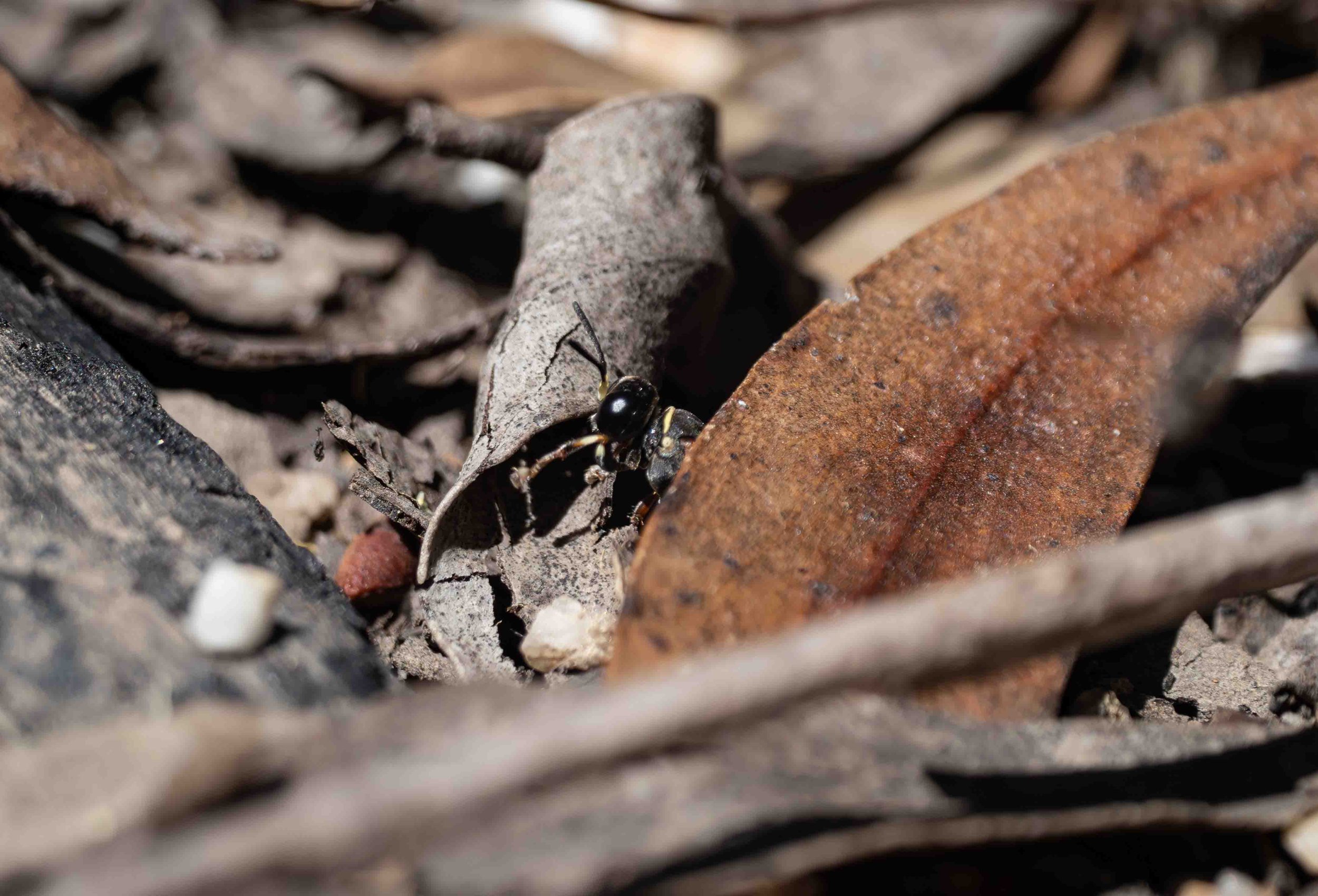
Austrogorytes spryi
A shady forest path, with an ever-changing layer of leaves and small twigs … and a familiar face emerges!

Austrogorytes spryi
My first brief glimpse, but enough to confirm that these medium-sized sand wasps are actively nesting here again this season.
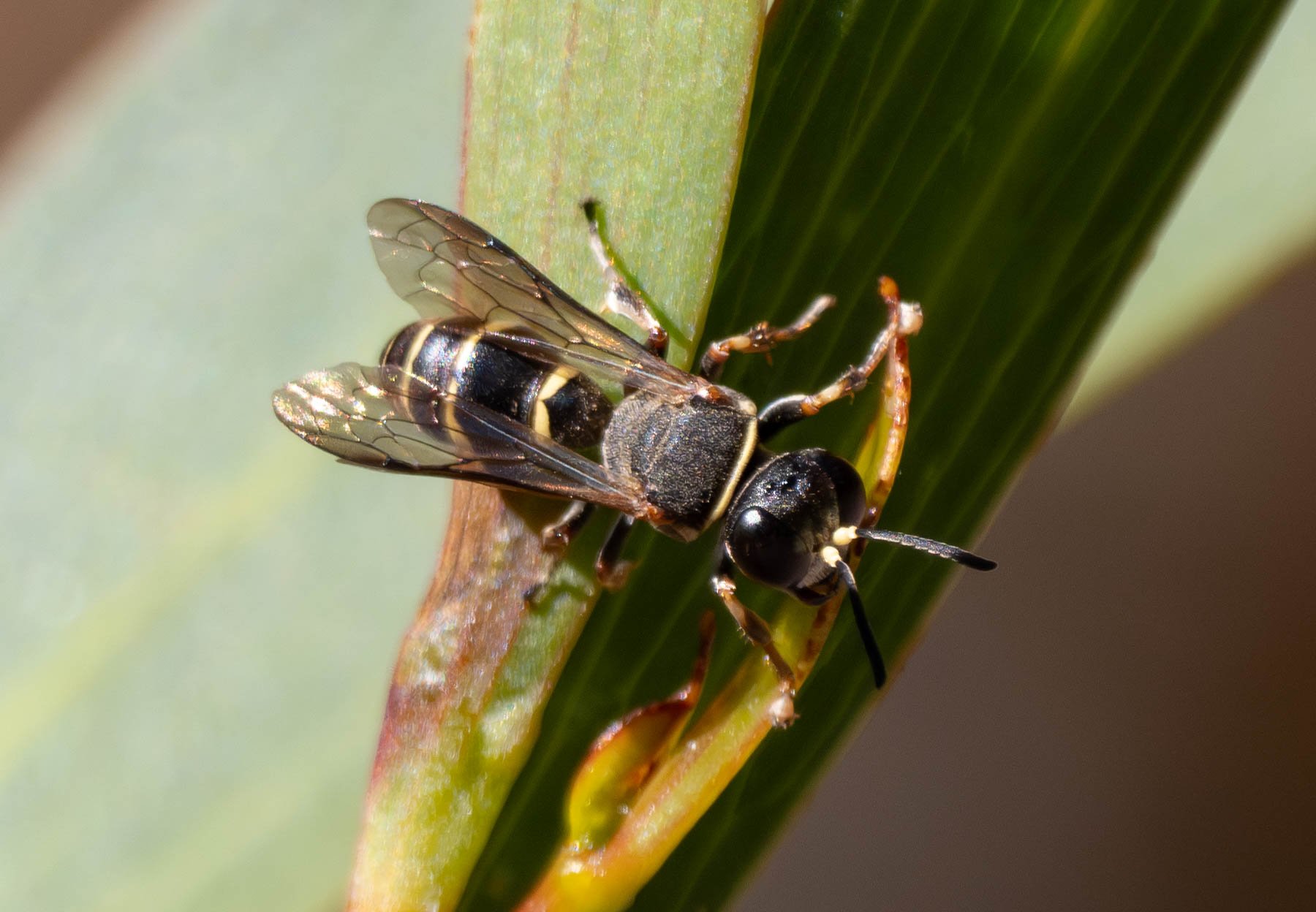
Austrogorytes spryi
My best chance of getting a good look at the nesting females is quite early in the morning. They occasionally perch on low plants alongside the track, preening, perhaps warming up in a patch of sun … and wary of threats in the vicinity of their nearby nests.
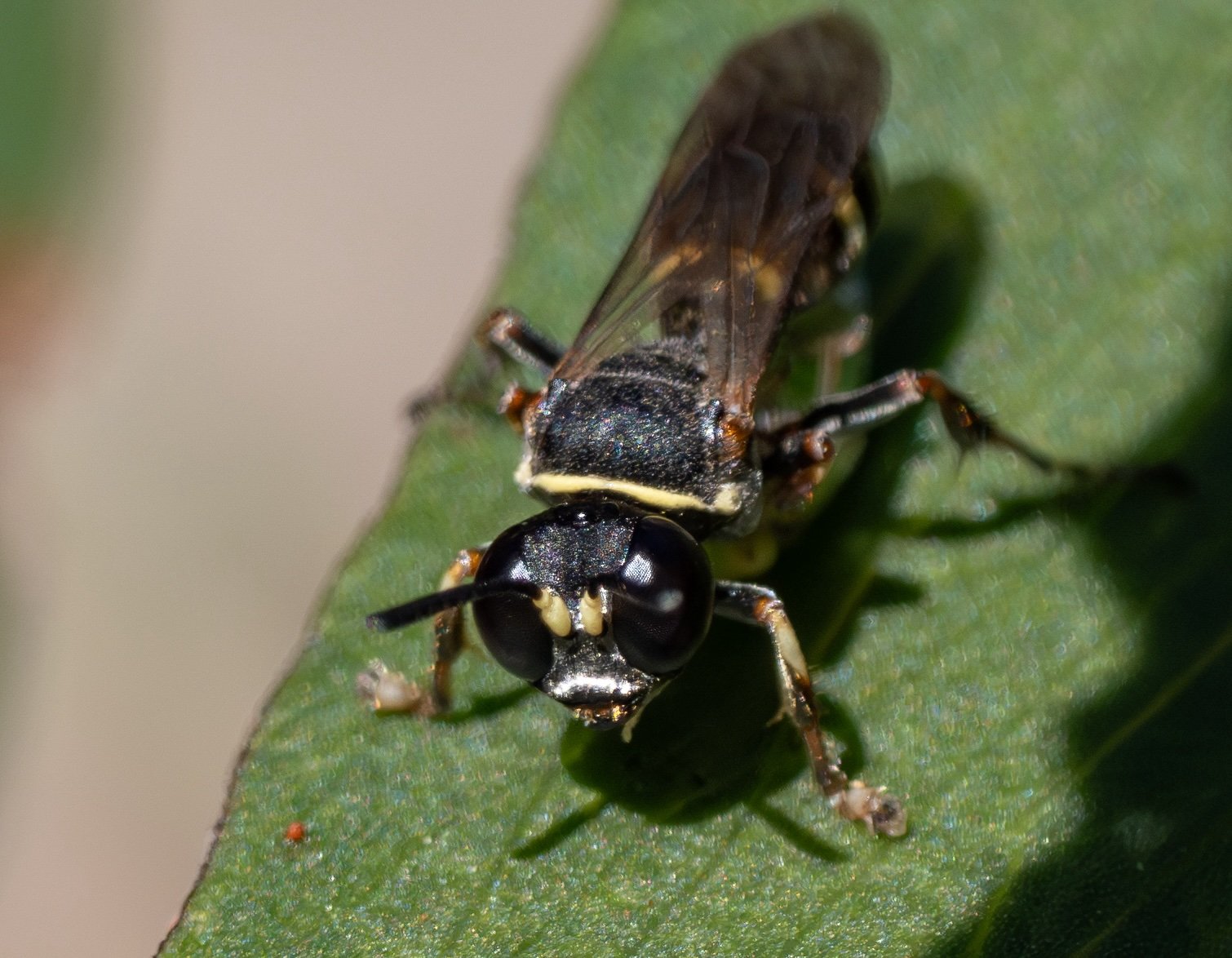
Austrogorytes spryi
There are at least two females with nests in close proximity. Returning from a successful hunt, this one perched briefly before diving below ground. Austrogorytes typically prey upon leafhoppers (e.g. Eurymelinae), both nymphs and adults. This appears to be a nymph she is holding below her body, gripped by her middle legs.
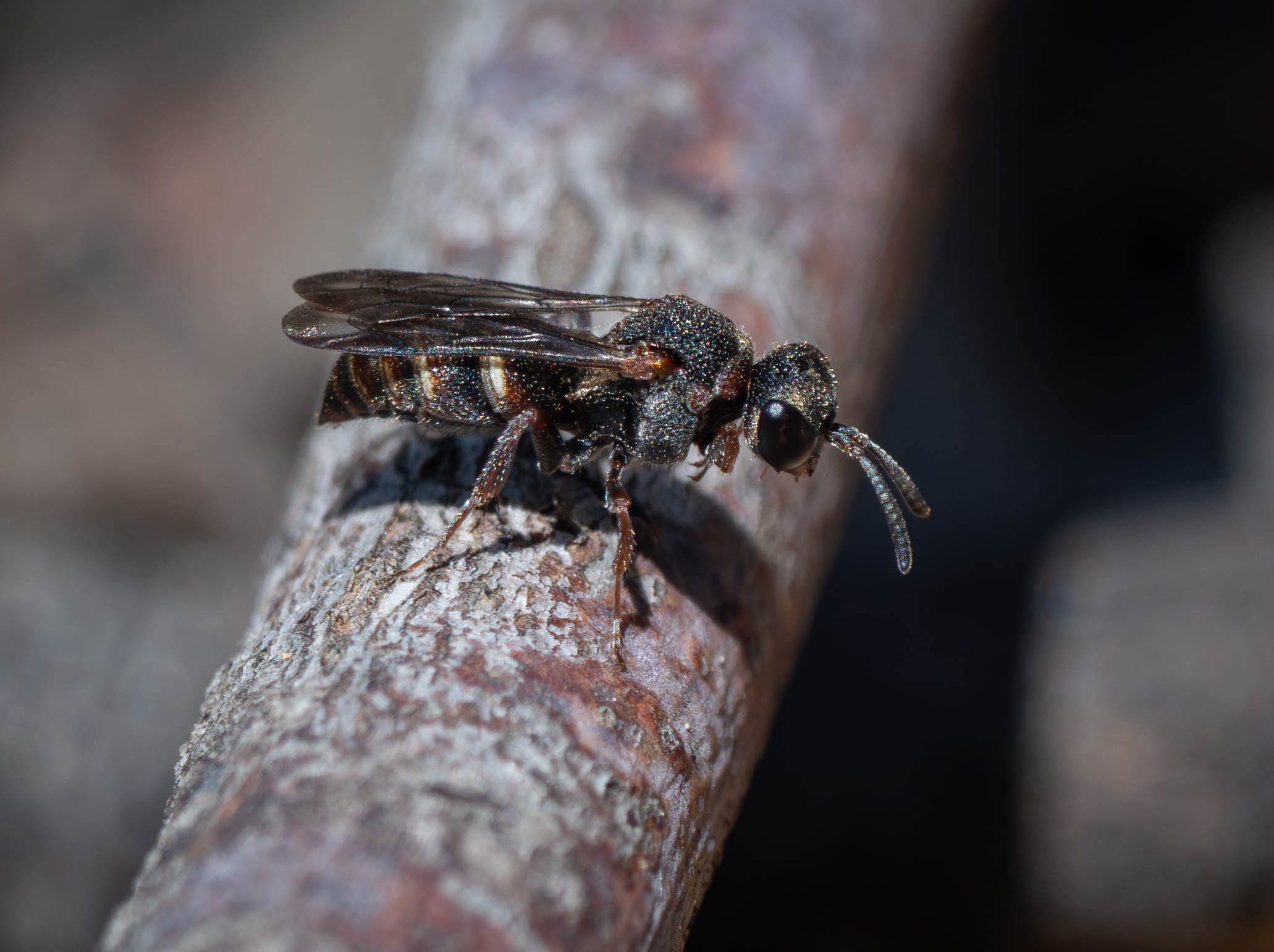
Several of the diagnostic features of Acanthostethus are clearly visible here:
- heavily sclerotised cuticle
- stout gaster
- posterolateral spines on the propodeum
- antennae narrower at the base than the apex
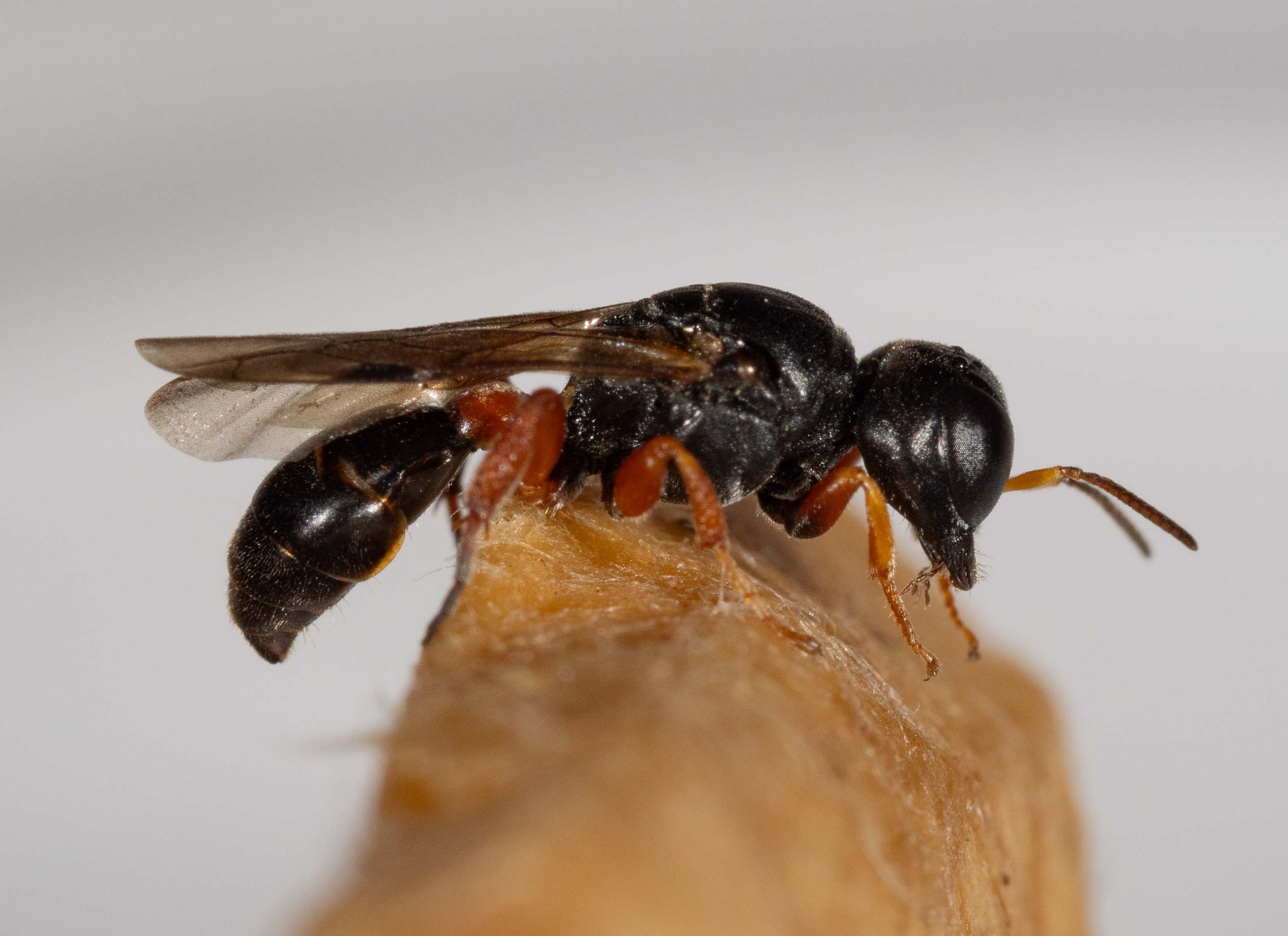
Pseudoturneria
Given how unusual the wasps were, and the large number at the nesting ground, I decided to collect a few for study. And it was well worth it. I was quickly able to confirm the genus – and it’s one very rarely photographed or collected.
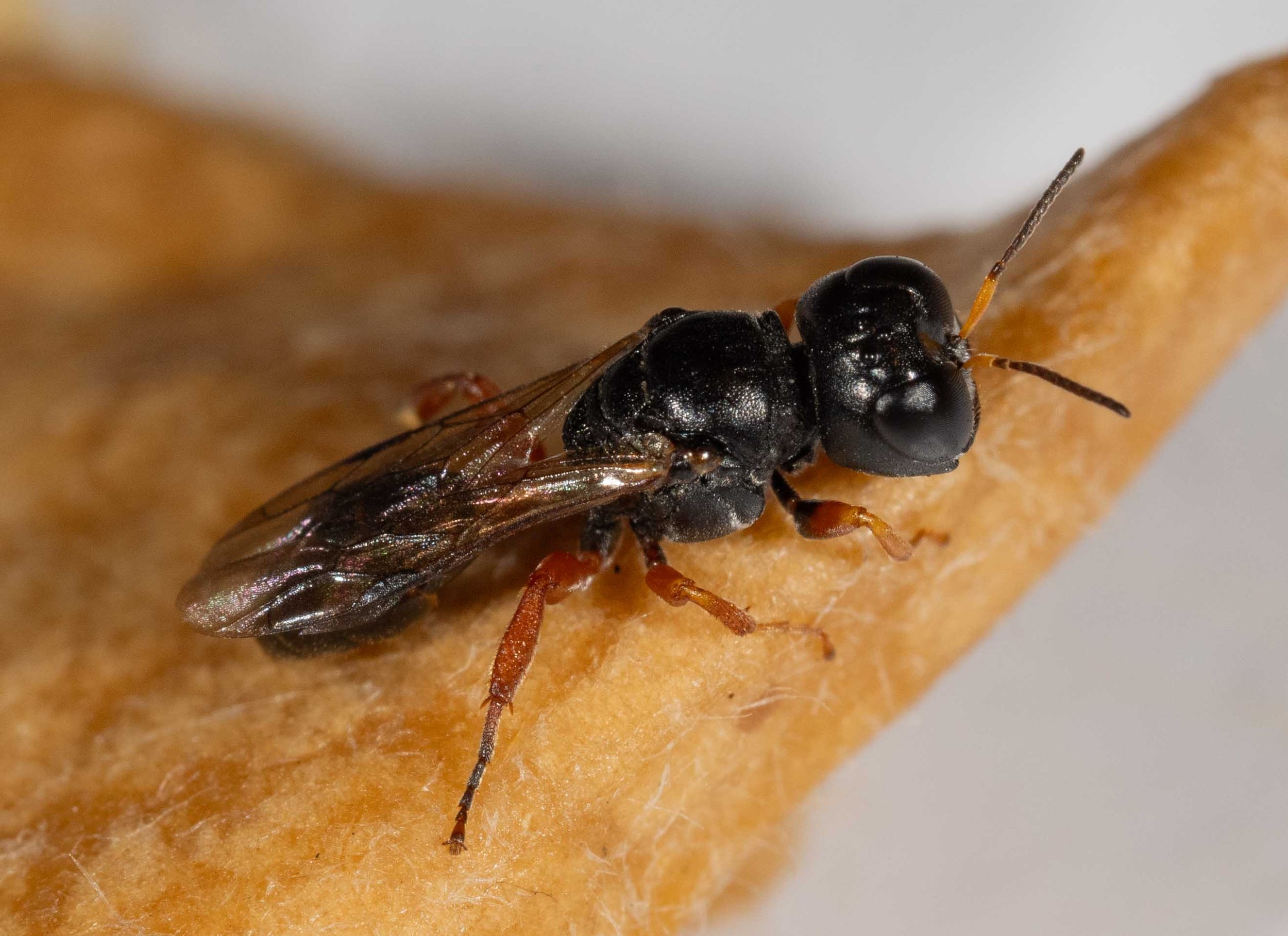
Pseudoturneria territorialis
Although unknown until 50 years ago (Leclercq 1974), this is probably the most ‘common’ species of Pseudoturneria. Even so, there are few published records and I’ve yet to find any images online.
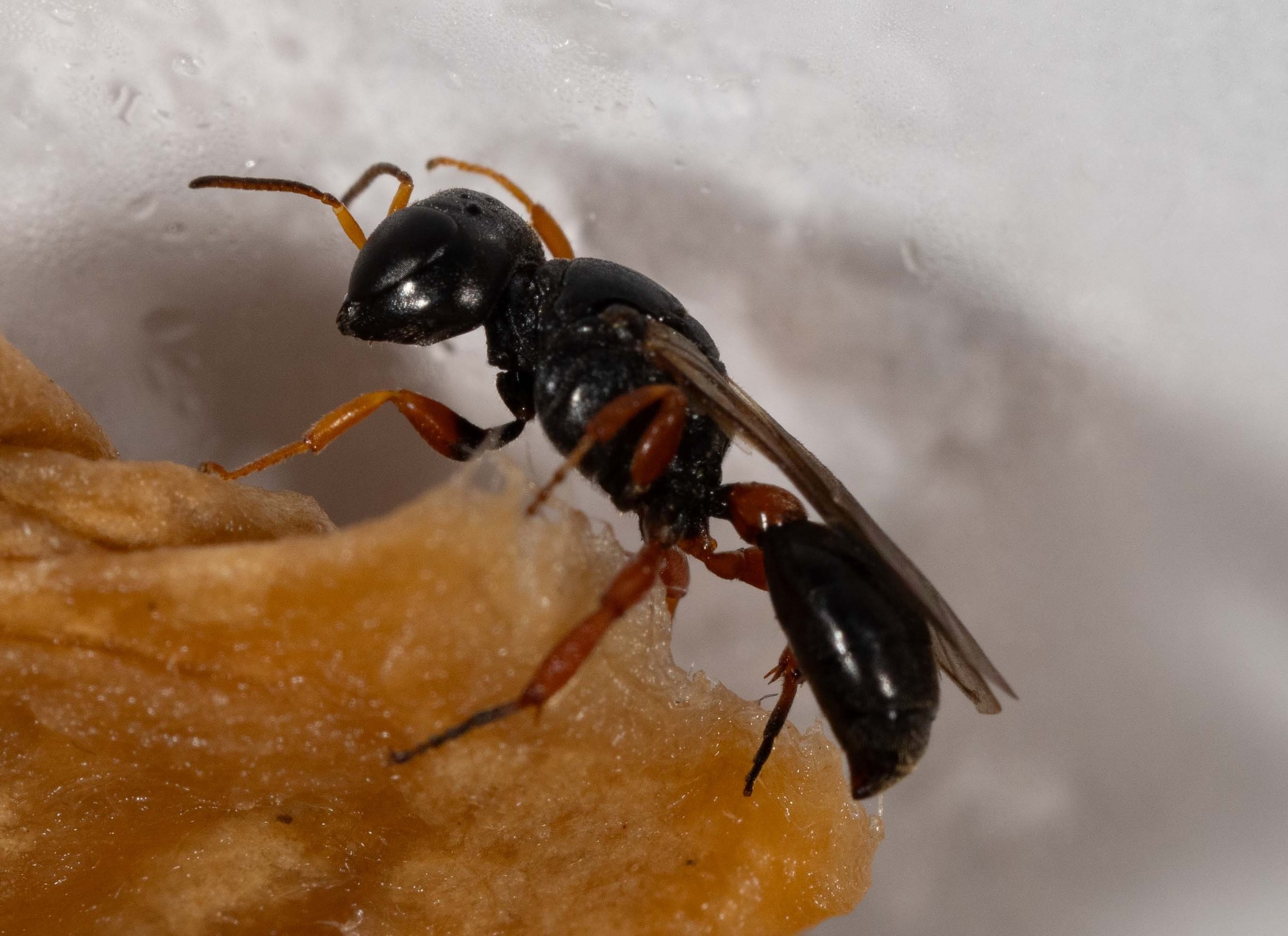
Pseudoturneria territorialis
For the logic behind my species identification, along with many more images, references, and a summary table for the 5 described species of Pseudoturneria, see the notes made in late December. The way we celebrate Xmas in the bush ;)
https://southernforestlife.net/notes/2024/pseudoturneria-crabroninae-crabronini


















